news
Team Travels – Our Wine Director explores British Sparkling Wine

With global demand for quality sparkling wine growing, so is the production of British Sparkling Wine.
Being in London for my MW studies and attending the London Wine Fair gave me the perfect opportunity to take a deep dive into British sparkling wines. Over the years, the British wine industry has witnessed a remarkable transformation from being regarded as a bit of a joke in the 1980’s to winning international awards.
With a perfect blend of favourable climates, diverse terroirs, and unwavering passion for winemaking, British vineyards have made their mark on the global wine scene. More than 450 producers make in excess of 16 million bottles in 2019 (up from roughly 4 million in 2016), and plantings doubling over the last five years. Sales of British sparkling wine alone in 2021 totalled £1.93 million Pounds.
Taittinger have invested in Kent and Pommery are collaborating with Hattingley Valley in Hampshire suggesting serious interest. The reason for this is most certainly the chalk geology in Southern England’s terroir. The same chalk that forms part of the Paris Basin and can be found in Champagne, Chablis and Northern Burgundy emerges on the other side of the channel in Southeast England, topped with heavier clay topsoils.
These chalky soils, the use of the same grape varieties (Chardonnay, Pinot Noir and Meunier), and the same traditional method of production invite comparisons to Champagne. The wines are however very different. If there is a hallmark, so to speak, for British fizz, it is the acidity which brings a freshness and vibrancy to these wines and managing that is a key challenge for winemakers. It is perhaps this acidity that also brings the perception of a generally lighter bodied style than Champagne. It’s worth noting that Brits drink about five times more Champagne than English wine.
If ever one has a doubt about climate change, they need look no further than to English sparkling wine for evidence. An overwhelming number of winemakers report that the levels of ripeness achieved in the last ten years would not have been achievable just 15-20 years ago. Most producers seem to agree that selling an individual bottle of English sparkling wine isn’t that difficult – even if initially for the curiosity factor – but when customers return having enjoyed the wine, they know they’re doing something well. With growing demand in restaurants, on grocery shelves and at high street liquor retailers, the future of English sparkling wine appears bright.


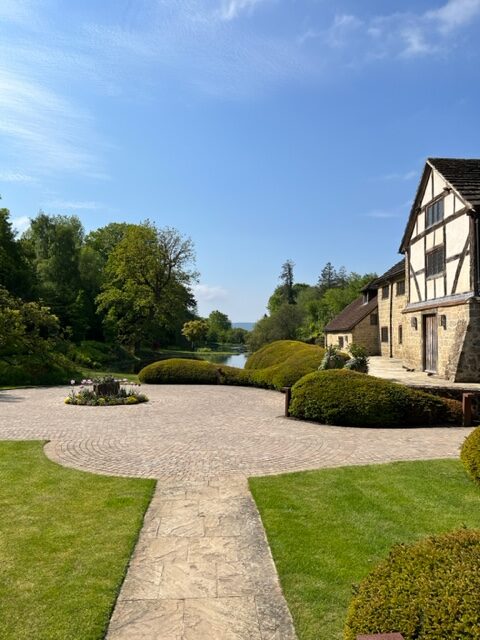


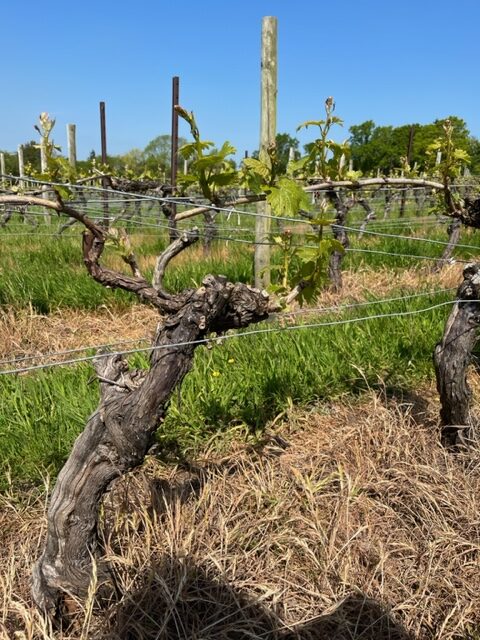
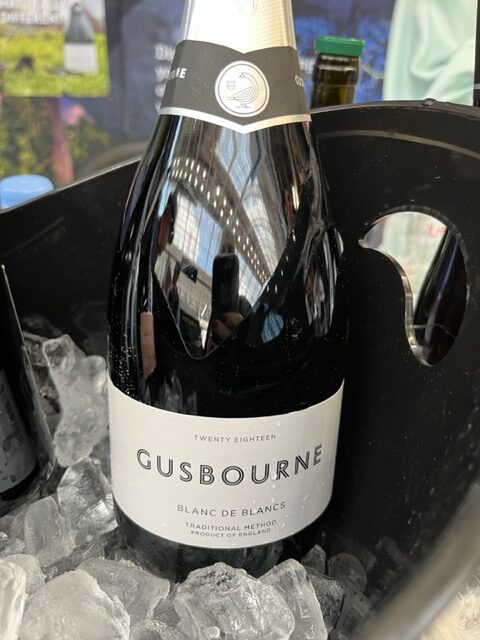
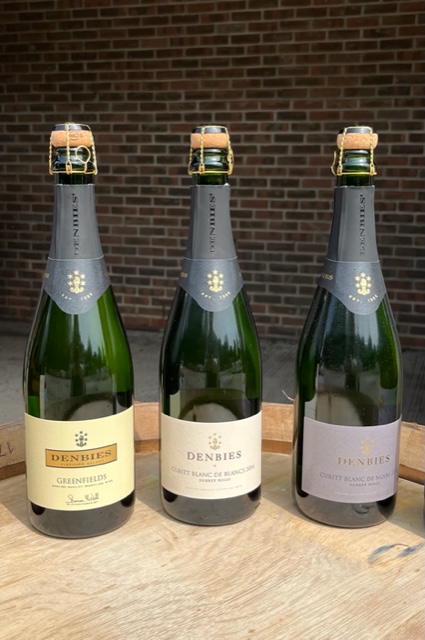

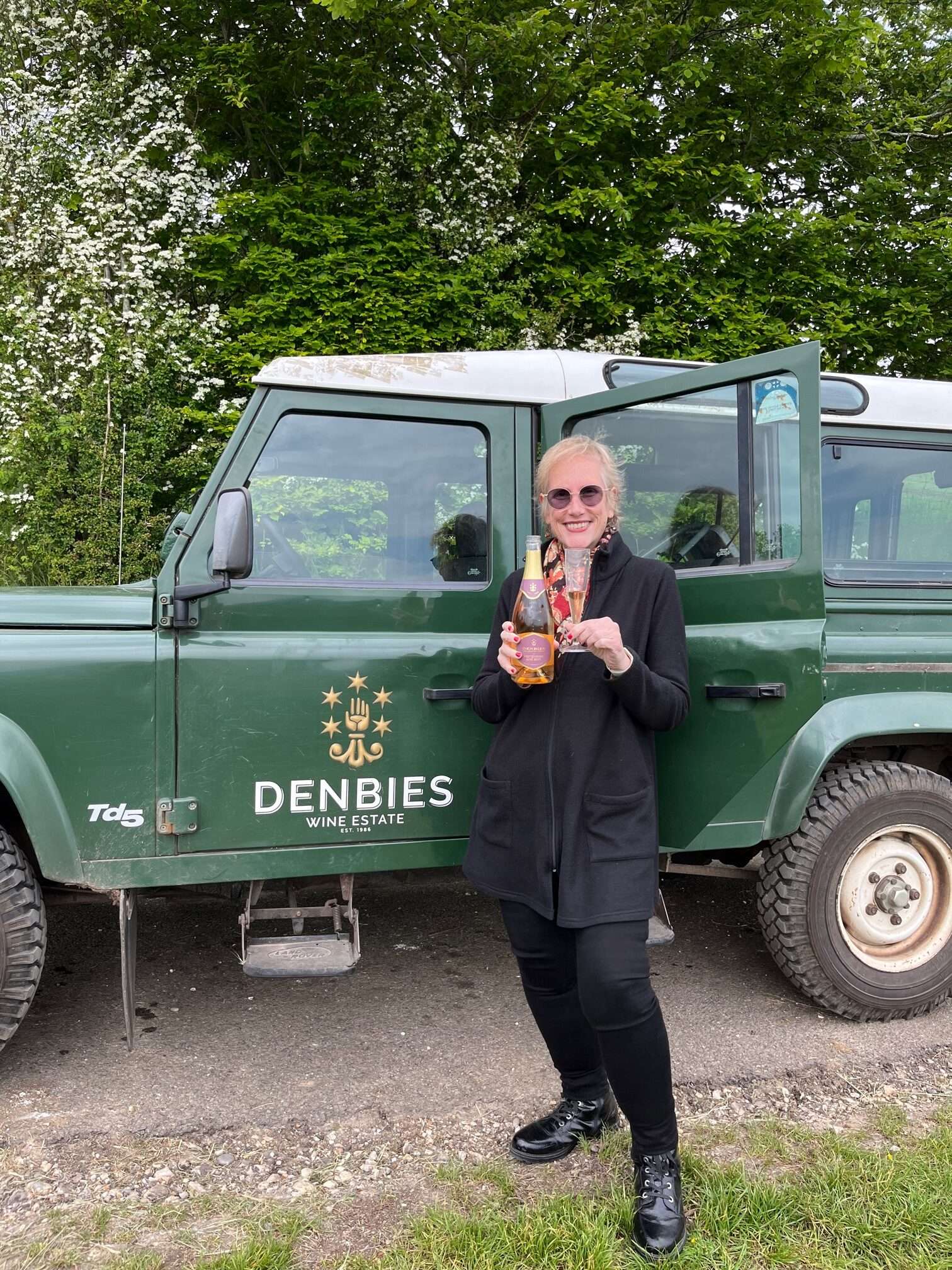
Here are some of the fascinating producers whose wines I tasted during the trip.
Balfour at Hush Heath Estate: A Sparkling Gem
Balfour at Hush Heath Estate stands as a beacon of excellence in British winemaking. With a commitment to crafting world-class sparkling wines, the estate has garnered widespread acclaim for its exceptional offerings. Vines were first planted in 2002, shortly after owners Richard and Leslie Balfour Lynn acquired the 400-acre estate surrounding their Manor. Armed with a passion for wine, Leslie was inspired by her favourite Billecart Salmon Rosé and set out to produce a pink sparkling wine. “If we can’t sell it”, they thought, “we’ll drink it”. The first vintage of Balfour Brut Rosé won a gold medal and trophy in the International Wine Challenge and was the first English sparkling wine to be served on British Airways First Class worldwide. It went on to be the only English Sparkling wine served at the 2012 London Olympics. One of the standout offerings from Balfour is the Balfour Brut Rosé. This elegant rosé sparkling wine enchants with its delicate pink hue, enticing aromas of red berries, and a lively palate of crisp acidity and refined fruit flavours. It exemplifies the exceptional quality that has come to define Balfour’s sparkling wines
Camel Valley: A Taste of Cornish Delight
Situated in Cornwall, these vineyard benefits from south-facing slopes and its proximity to the Atlantic Ocean, creating an ideal microclimate for grape cultivation. In 1989, the first eight thousand vines were planted on the farm which initially focused on sheep and cattle. Self-taught owners, Bob and Annie Lindo relied on friends to help harvest the early vintages. Since 2002, their son Sam took over as winemaker. Proud Dad, Bob, noted ‘When Sam came second in the World Sparkling Wine Championships to Bollinger in Italy in 2009, I really did take my hat off to him’. However, when he won the Trophy for ‘Best International Traditional Method Sparkling Wine’ in 2010 in Verona, ahead of Bollinger and Roederer, I nearly ate it!” Over thirty years of wine production have seen this producer scoop numerous awards receiving a Royal Warrant in 2019. The 2019 Camel Valley Pinot Noir Rosé Brut showed pretty, delicate floral notes with bright strawberry and raspberry fruit balanced with crisp acidity and a long finish.
Chapel Down: A Fusion of Tradition and Innovation
At the heart of the picturesque North Downs Kent countryside lies Chapel Down, a winery that has emerged as a prominent name in the British wine industry. Renowned for its exceptional sparkling wines, Chapel Down embraces innovation and experimentation through experimental plantings and modern winemaking practices, consistently pushing boundaries to create wines of unparalleled quality from this relatively new region. Their cuvées offer a harmonious blend of fruitiness, complexity, and elegance, often infused with distinctive characteristics derived from the region’s south facing chalky soils and warm, maritime climate. Chapel Down was the first winery to feature in the London Stock Exchange’s ‘1000 Companies to Inspire Britain’. The Chapel Down Kit’s Coty Blanc de Blancs 2017 was tremendously fresh while generous and rich with apple and buttery pastry notes. Sourced from the single Kit’s Coty vineyard, the wine is partially matured in barrel and then spends more than three years in bottle before release. The dosage of 7.5g is seamlessly integrated and astutely balanced with the zesty acidity giving the perception of dryness.
Denbies Wine Estate: A British Sparkling Gem
Located in the beautiful Surrey Hills at Dorking, Denbies Wine Estate has been instrumental in putting English wine on the map. With a rich winemaking history dating back to 1986, Denbies has grown to become one of the largest vineyards in the UK, spanning over 265 acres of picturesque landscapes and comprising more than 10% of the UK’s total plantings. The estate is named after John Denby who owned the original farmhouse in the 16th century. The hills here are chalky with loam and flint topsoil. Sustainability is a focus– they’ve moved away from plastics, installed solar panels and feature electric car charging points. The extensive hospitality complex welcomes over three hundred thousand visitors and includes Britain’s first vineyard hotel and numerous dining options in addition to an array of tours, tastings and trails. Denbies’ commitment to producing exceptional sparkling wines is evident in their meticulous approach to winemaking. Standouts tasted were the 2013 Cubitt Blanc de Blancs and Blanc de Noirs. A zero dosage, linear, savoury and moreish gem, the Blanc de Blancs has spent over 30 months on the lees and displays green apple and citrus character with a focus and precision. The Blanc de Noir is an elegant and nuanced wine with notes of red fruits, a creamy texture, and a long, satisfying finish.
Gusbourne: Elevating British Sparkling Wines
Situated at Appledore in Kent, Gusbourne’s 90 hectares across sixteen vineyards epitomize the resurgence of English winemaking. Founded by South African, Andrew Weeber, grapes were first planted on the site in 2004. In 2010 the debut 2006 vintage was released to critical international acclaim. The commitment to biodiversity, sustainable practices and meticulous attention to detail in the vineyards shine through in each bottle and they only produce vintage wines. Gusbourne’s wines captivate the senses with their remarkable depth of flavour, revealing layers of fruit, toasty notes, and a refined structure that come from extended aging on lees and in bottle. Chief winemaker Charlie Holland is the only person to have won the IWSC English Wine Producer of the Year three times. Gusbourne launched their prestige cuvée 51°North 2014 last year, at an audacious £195 price point producing a mere 2,000 bottles. By far the most unique sample tasted, this is a richer, more complex, gastronomic wine with 10% of the base wine fermented in oak. The 2013 Blanc de Blancs Late Disgorged spent over 7 years on the lees showing attractive orchard fruit, patisserie and spice notes was a standout – fresh, complex and vibrant.
Hambledon: England’s Oldest Commercial Vineyard
Established in 1952 by Major-General Sir Guy Salisbury-Jones (assisted by winemakers from Pol Roger Champagne with initial plantings) and acquired in 1999 by businessman and former investment banker, Ian Kellet, Hambledon has strong connections to Champagne. In 2005 after an oenology course at Plumpton, Kellett planted 4 hectares of Chardonnay, Pinot Noir and Meunier in 27 combinations of clone and rootstock to see what would work most effectively. The vineyard’s sustainable practices prioritize the health of the land and the longevity of their vines, ensuring a thriving ecosystem for generations to come. Kellet also brought together an ace winemaking team helmed by Hervé Jestin, who spent 20 years as the cellar master for Champagne Duval Leroy. Beyond their dedication to traditional sparkling wine varieties, Hambledon also explores exciting experimental cuvées that push the boundaries of British winemaking. Investment in technology and equipment see grapes handled as gently as possible by gravity in the winery, built in 2011. Roughly 8km from the sea on very chalky soils, today there are 80 hectares of vineyards with expansion planned to 200 hectares over the next decade. A seriously minimalist wine, the Hambledon Classic Cuvée is a Chardonnay based blend that spends at least 35 months on the lees, exhibiting notes of citrus blossom, green apple and white peach. Lively lemon sorbet like acidity and sea spray salinity on the finish give this a chiselled, linear trajectory.
Nyetimber: A Symphony of Elegance
Located in the beautiful region of West Sussex, Nyetimber stands tall as a pioneer in British sparkling wine production. Historically significant, this property is first mentioned in the Domesday Book of 1086. It was also home to Anne of Cleaves, the fourth wife of Henry the VIII, a few hundred years later. This winery was started by two Americans in 1988 with the first vintage produced in 1992. In 1996, after winning the best sparkling wine for their 1993 vintage, the Queen served it at her Golden Anniversary lunch. In 2006, Eric Heerema took over, bringing in Cherie Spriggs (and later Cherie’s husband) as winemaker. In 2018, Cherie won the sparkling winemaker of the year award at the IWSC competition, the first person outside of Champagne to win this coveted award. Their commitment to crafting exceptional wines has earned them international acclaim and numerous awards. Nyetimber specializes in traditional method sparkling wines, employing Chardonnay, Pinot Noir, and Pinot Meunier grapes. Their cuvées exude elegance, with a crisp acidity, delicate fruit flavours, and a fine mousse, setting the standard for excellence in premium British sparkling wines. Keep an eye out for the single vineyard Tillington and Prestige 1086 cuvées.
Ridgeview Estate: Where Dreams Come to Fruition
Nestled amidst the scenic South Downs of East Sussex, Ridgeview Estate has played a significant role in the success of British sparkling wines. This family-owned vineyard has been consistently producing outstanding sparkling wines since its inception in 1995, now led by the second generation. As founding members of Sustainable Wines GB, they ambitiously strive to be leaders in sustainable and ethical practices from vine to glass. In addition, they are a “B Corp” balancing people, the planet and profit. Ridgeview uses solar energy, sensor-activated LED lighting, processes waste water from the estate, and is making progress in harvesting rainwater. Ridgeview’s wines boast a distinct fruit-forward character, perfectly balanced by refreshing acidity and an impressive aging potential. The Rosé de Noirs 2018 took home a Decanter World Wine Award Platinum Medal – with layers of bright ripe berry fruit, toast and honey it’s an ideal aperitif or accompaniment to fresh strawberries in the summer.
England doesn’t yet have a protected status for it’s bubbly like Champagne, Prosecco and Cava do. British winemakers have requested this official PDO (Protected Designation of Origin) status to protect against imitation and lesser quality wines. All the producers and winemakers I engaged with agreed a catchier name than ‘British Sparkling Wine’ is required, but as of yet nothing has been decided. Suggestions have included ‘Albion’, ‘Britagne’, and ‘Merret’ (after Brit Christopher Merret, who documented the deliberate addition of sugar for production of sparkling wine). Who knows, might we be ordering a glass of “Sussex” in the future?
The renaissance of British sparkling wines has mesmerized wine enthusiasts around the globe. Impressively, it appears they are not all trying to re-create the holy grail of Champagne but rather to craft the best possible wines from their unique British terroir. It will be incredibly interesting to watch this category over the next ten years, observe how these wines evolve and see their aging capacity over time.
Enjoy what is in your glass! Santé!
Debi
Debi van Flymen
Wine Director
Restaurant Mosaic at Châteaux des Tesnières
“The discovery of a wine is of greater moment than the discovery of a constellation. The universe is too full of stars.”
― Benjamin Franklin